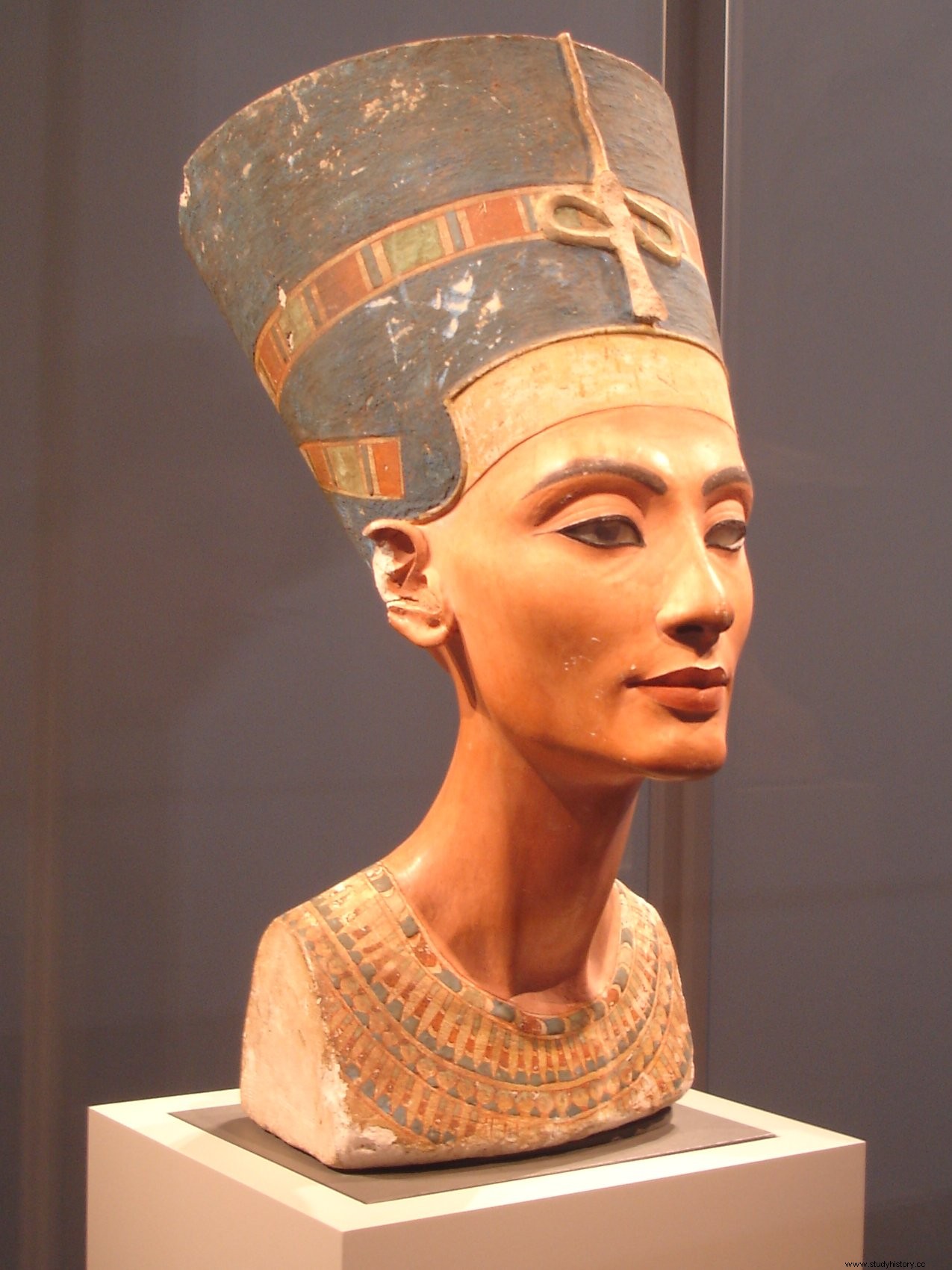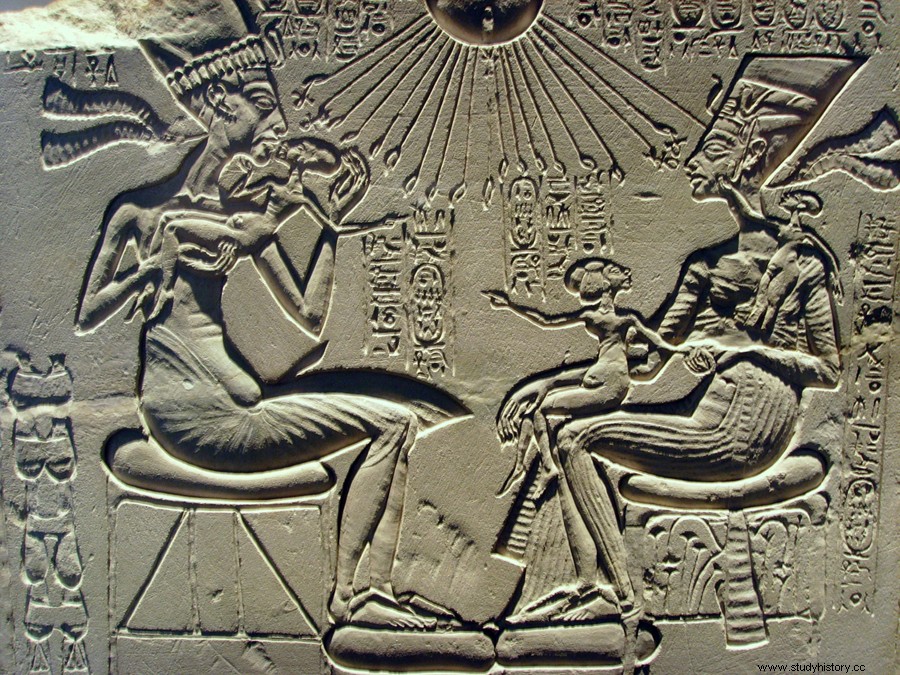Egyptian queen, legendary for her beauty, Nefertiti (approximately 1370 to 1333 BC) plays above all a leading political and religious role alongside her husband, the famous Akhenaten.
An uncertain genealogy
 Nefertiti's genealogy is not known with certainty. Born around 1370, she could come from a branch parallel to that of the pharaoh and be a niece of Queen Tiyi, wife of the pharaoh Amenhotep III and mother of Akhenaten, of whom Nefertiti would thus be a cousin. Renowned for her great beauty, her name means "beautiful has come".
Nefertiti's genealogy is not known with certainty. Born around 1370, she could come from a branch parallel to that of the pharaoh and be a niece of Queen Tiyi, wife of the pharaoh Amenhotep III and mother of Akhenaten, of whom Nefertiti would thus be a cousin. Renowned for her great beauty, her name means "beautiful has come".
Nefertiti becomes a great royal wife by marrying the pharaoh Akhenaten, on a date which is not known with certainty. The couple will have six known daughters:Mérytaton, Mâkhétaton, Ânkhésenamon, Néfernéferouaton Tasherit, Néfernéferourê, Sétepenrê.
An influential queen
Despite the uncertainties concerning her genealogy and her accession to the throne, the leading political role played by Nefertiti is not in doubt. Probably influenced by the example of his mother Tiyi who exercises an unprecedented role for an Egyptian queen, Akhenaton thus shares political and religious power with his great royal wife.
On some archaeological sites, statues represent Nefertiti of the same height as the pharaoh, indicating a possible elevation to the rank of co-regent. In the Temple of Aten at Karnak, she is depicted almost twice as often as her husband. Sometimes figured alongside Akhenaton in ceremonies of offering to the god Aten, or with her daughters Merytaton and Mâkhétaton, she is also represented in scenes usually reserved for the pharaoh:bas-reliefs show Nefertiti chastising enemies, captives decorating his throne. Before her, no queen was depicted in similar scenes, not even the influential and powerful Tiyi.

A mysterious disappearance
In the year fourteen of her husband's reign (around 1339 BC), Nefertiti disappears almost entirely from iconography; her daughter Mérytaton replaces her in official ceremonies as great royal wife. Several hypotheses have been considered to explain this disappearance:a sudden death, from illness or violence, or even a disgrace, a theory now disqualified.
Some sources indicate on the contrary that Nefertiti could have been still alive at the time of the death of her husband, around 1338-1337 BC, and still occupy the function of royal wife. Akhenaton's successor, after his death, is in fact a successor to a brief reign:Ânkh-Khéperourê Néfernéferouaten. A woman in the identity is uncertain and which could be, according to the hypotheses of specialists, Nefertiti or her daughter Merytaton.
To date, the tomb of Nefertiti has not been identified.
